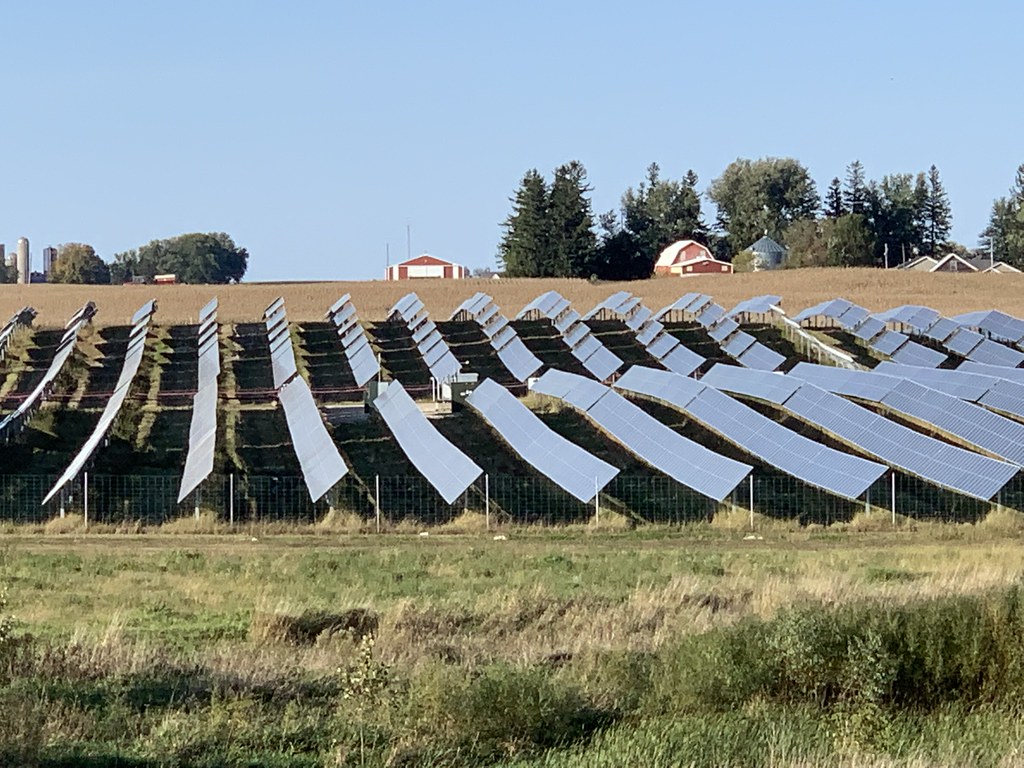On Monday, October 7th, an inquisitive group gathered to learn more about the newly installed solar array in St. Charles, Minnesota.
This 2 MW project is part of the 'Butter Solar' Portfolio solar development, owned and operated by BluEarth Renewables US and totaling 23 MWAC across 10 communities in Wisconsin, Minnesota, and Iowa. The event was hosted by Nick Koverman of the City of St. Charles along with project leads Eric Udelhofen of OneEnergy Renewables, Stanley Minnick of Organic Valley, and Chris Barnes of BluEarth Renewables.




